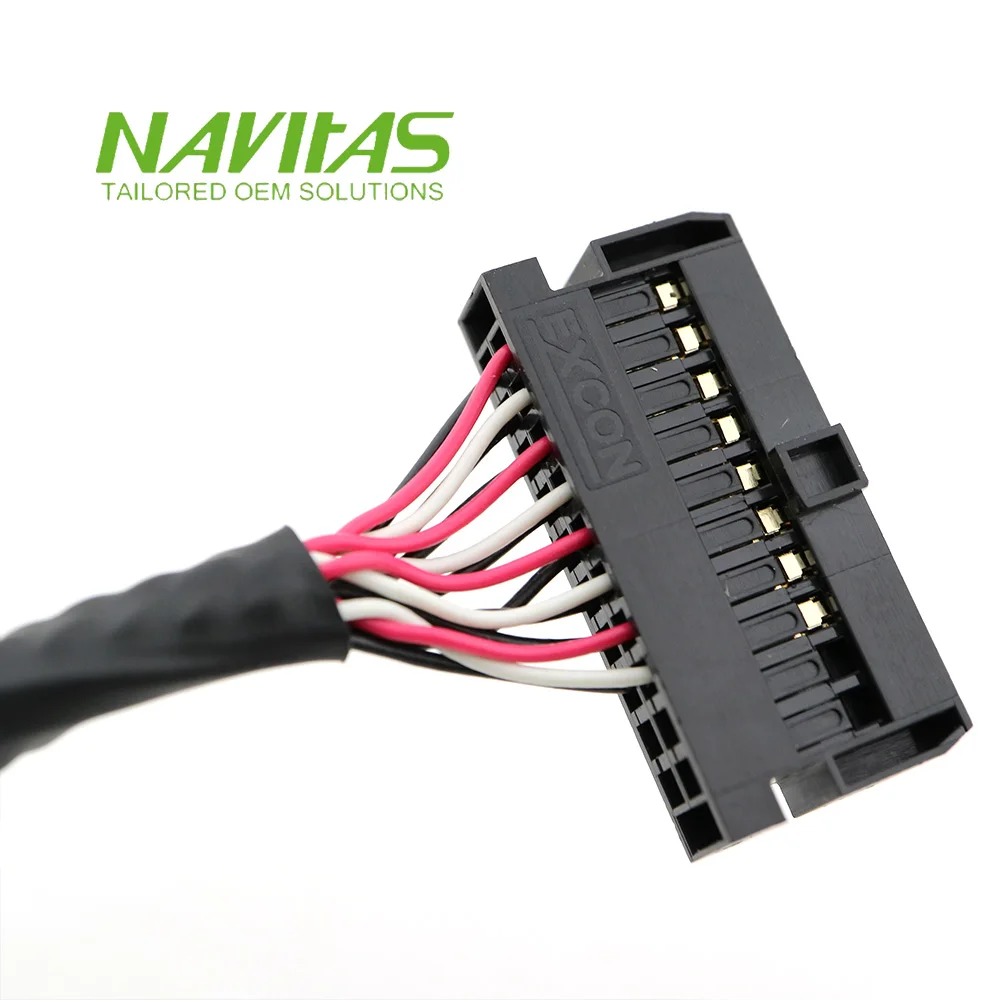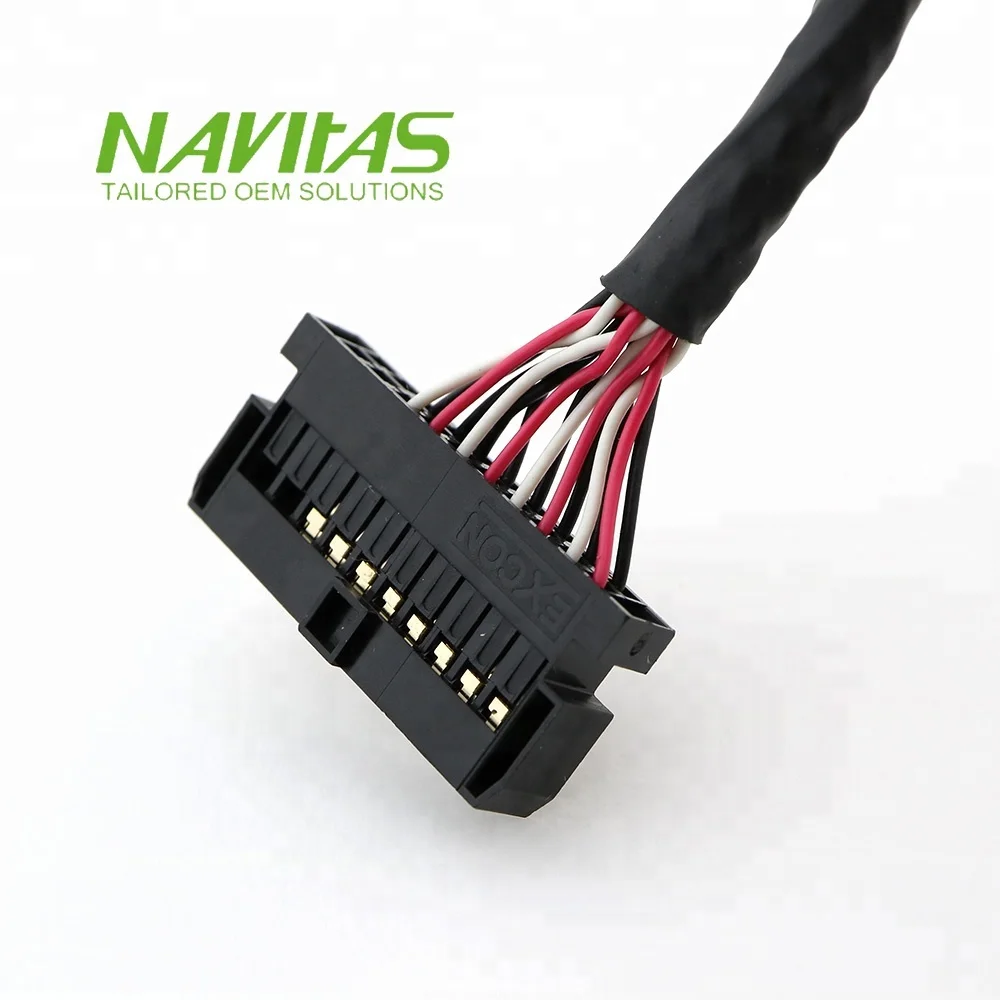Hirose 20 pin 2.54mm pitch Connector to DF13 30 pin UL1571 28 awg OEM Cable

| Product Name | Hirose 20 pin 2.54mm pitch Connector to DF13 30 pin UL1571 28 awg OEM Cable |
Compliance | RoHS |
Number of Conductors | 30 + 20 |
| Connector A | Hirose HIF3BA-20D-2.54C (equivalent type) |
| Connector B | DF13-30DS-1.25C (equivalent type) |
| Cable | UL1571 20C 28 awg 4 Twisted |
| MOQ | 100 |
| Lead-time | 3~4 weeks |


Click Here for Products Detail and Categories

We Provide Turnkey Solutions keeps it simple, reliable and affordable.
Navitas will symbolize everything that you expect from an OEM manufacturer and product desgin supplier of electrical products in Tailored OEM Solutions at Far East: A business where you are the number one priority, where your requirements are what matter and where you can expect your contacts to be highly skilled and able to convert your needs into a final product.






Navitas. It is pledge
A subsidiary of Green Solar Tech. CO., LTD., Navitas leverages its strong network of factories to deliver effective results and solutions in the electrical cable wiring assembly and also related to artificial intelligence industries. Navitas is the pledge that we make to you. A pledge of reliability and efficiency. A pledge that we will utilize our engineering skills, quality control, outstanding project management and product planning to bring you the best.



T/T in Advance 
FAQ
1. How to choose a right cable?
A designer has to evaluate the determining system parameters such as signaling rate, cable length, single-ended or differential (balanced) signaling, point-to-point, multidrop or multipoint configuration, noise margin, flexibility, costs.
2. What’s will impact the material you select?
Specific equipment, machine structure and environment
3. Follow question 2, below you have to concern
Unshielded or shielded (taped, braided, or combination of both)?
Round or flat? Coaxial, multiconductor or twisted pair cable?
4. Why cable need to be shielding?
To reduce electrical noise from affecting the signals, and to reduce electromagnetic
radiation that may interfere with
other devices.
5. What sort of cable need suggest to?
For long transmission lines, a braided or served shield is recommended to ensure good isolation between the signal lines and the environment.
6. Is that double-shielded cables that are both taped and braided typically perform better?
Yes
7. What kind of cable is cheaper and easy to handle?
Multiconductor cables are cheaper and easier to handle than twisted pair or coaxial cables, especially in terms of termination.
8. What’s you recommended for differential data transmission, such as LVDS?
The twisted pair cable is recommended since it provides two identical conductors to transmit the signal and its complement.







